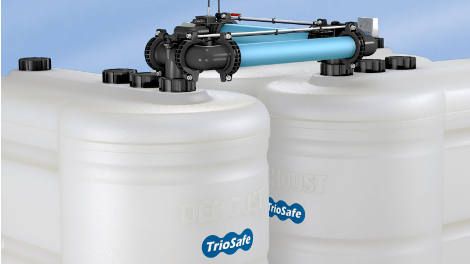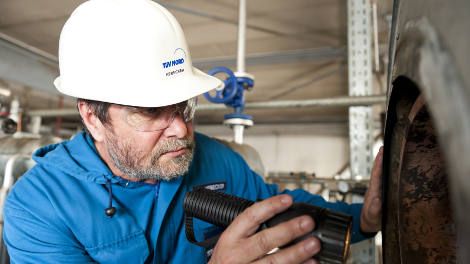Liquid energy
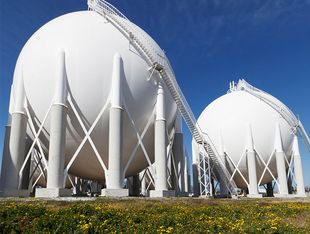
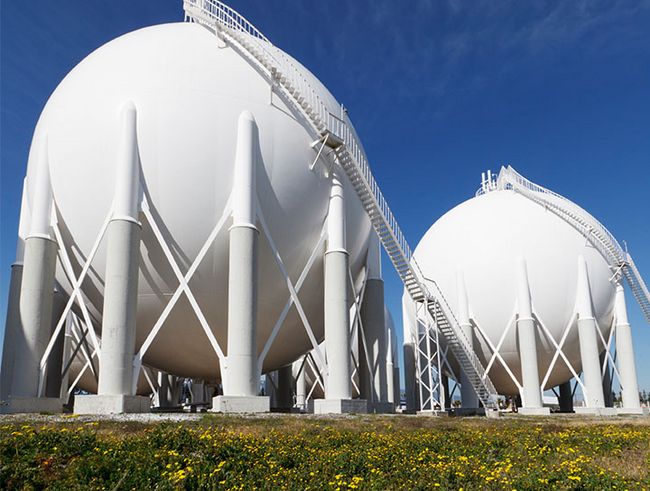
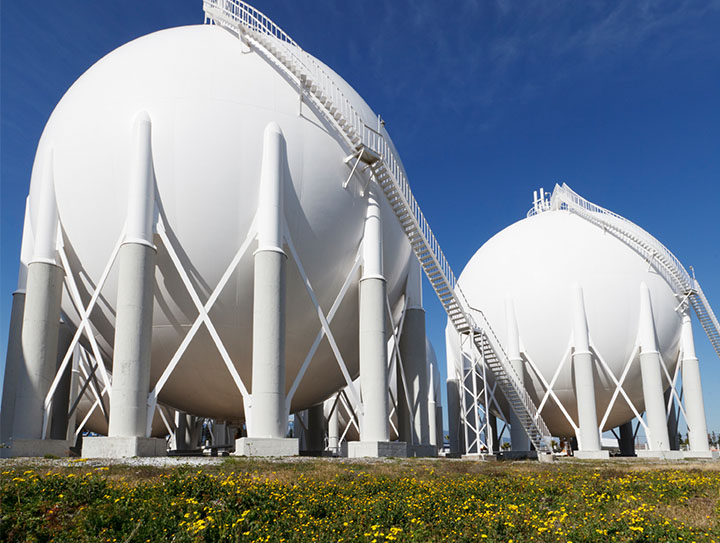

Liquefied gas tanks (gas tanks) must be subjected to recurring inspections according to §15 of the Ordinance on Industrial Safety and Health.
This recurring inspection is divided into an inspection of good order and a technical inspection.
There are special framework conditions for liquefied gas tanks described in the Ordinance on Industrial Safety and Health and the corresponding technical rules.
These framework conditions also include potential easements provided by the execution and the scope of the recurring inspection, if specific requirements are satisfied.
Surface liquefied gas tanks
In case of surface liquefied gas tanks, the inspection of the inner wall during the recurring inspection is not required. The following requirements must be satisfied for this:
- It must be verified, in writing, that only propane, butane, or a mixture of the two with a standardised purity grade have been stored.
- The containers may not be equipped with installed components, such as heaters or stiffening rings.
- The containers may not have a volumetric capacity of more than 3 tons. The proper condition of the safety equipment (e.g. safety valve) must be assessed during the recurring inspection (depending on the order size). As a rule, the safety valve is subjected to a functionality test using special testing equipment. The inspection is carried out at the container's operating site.
Buried or semi-buried liquefied gas tanks
In case of buried or semi soil-buried liquefied gas tanks, an inner coating is generally required (a water pressure test must also be conducted under certain circumstances). However, test procedures have been developed in recent years that allow these tanks to be tested, in many cases, without requiring the tanks to be opened. These test procedures involve a feed test and a sound emission test. The sound emission test is an alternative test procedure to detect changes in the material. This takes place by applying a load (pressure increase), which causes an emission of acoustic waves in the material. The feed test is also alternative test procedure. In this case, the effectiveness of the container insulation is tested. (The feed test also requires carrying out a random sound emission test for a reference test. The random noise emission test is carried out on 10% of these tanks in addition to the feed measurement that is carried out on 100% of these tanks.) Instead of coating the inner wall, an another alternative test procedure can be used that entails having an expert test the externally powered cathodic corrosion protection system. (The testing of the externally powered cathodic corrosion protection system also requires carrying out a random sound emission test during a reference test. The random sound emission test is carried out on 10% of these tanks and the externally powered cathodic corrosion protection system is tested on 100% of these tanks.)
One the aforementioned alternative test procedures can be selected if the following requirements are satisfied:
- It must be verified, in writing, that only propane, butane, or a mixture of the two with a standardised purity grade have been stored.
- The containers may not be equipped with installed components, such as heaters or stiffening rings.
- The containers may not have a volumetric capacity of more than 3 tons. The choice of which alternative test procedure is suitable depends on the corrosion protection measures that were already made during the storage of the Container.
Containers with high-quality corrosion protection
The following test procedures – in addition to the inner wall coating – are available for these containers:
epoxy resin coating
- Feed test
- Sound emission test
bitumen coating plus galvanic cathodic corrosion protection system
- Sound emission test
Double-walled with leak detector
- Leak protection test
Containers without special corrosion protection (bitumen insulation)
- Sound emission test
Information on the testing processes
Today, the tests are generally carried out, as described, on the containers while they are operating. Downtimes are thus reduced to a minimum. However, at the same time, the tests to be carried out may, in very rare cases, yield results requiring short-term plant maintenance. Therefore, we must be guaranteed that the customer can, within the scope of an order, restore the safe condition of the plant within a defined time period. As of result, this means that we can only accept orders from end consumers if a corresponding written guarantee from a public utility company is submitted. This written guarantee must refer to the recurring inspection. An emergency service declaration from a public utility company is not sufficient in this case.
The aforementioned test procedures are provided for your safety. The respective tests are divided into several test steps that under certain circumstances require several visits to the plant. The respective partial steps are scheduled independently of each other. A corresponding appointment is generally arranged for buried tanks, although the power to these tanks may be briefly interrupted, if at all (when using the alternative test procedures). If remedial work is carried out, there may still be a chance that a small portion of the soil near the tank must be measured. Our personnel and the employees of our partners are instructed to restore the original conditions as much as possible.
